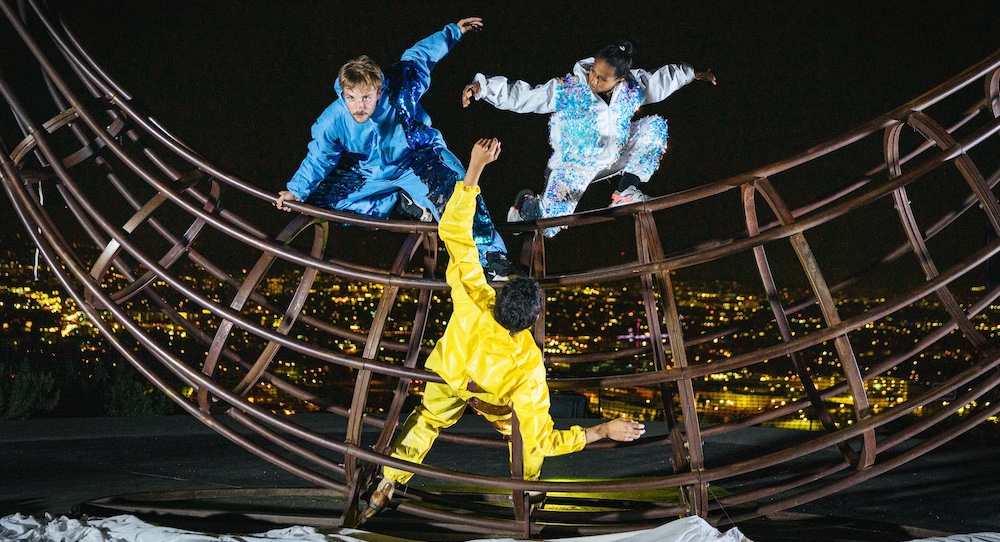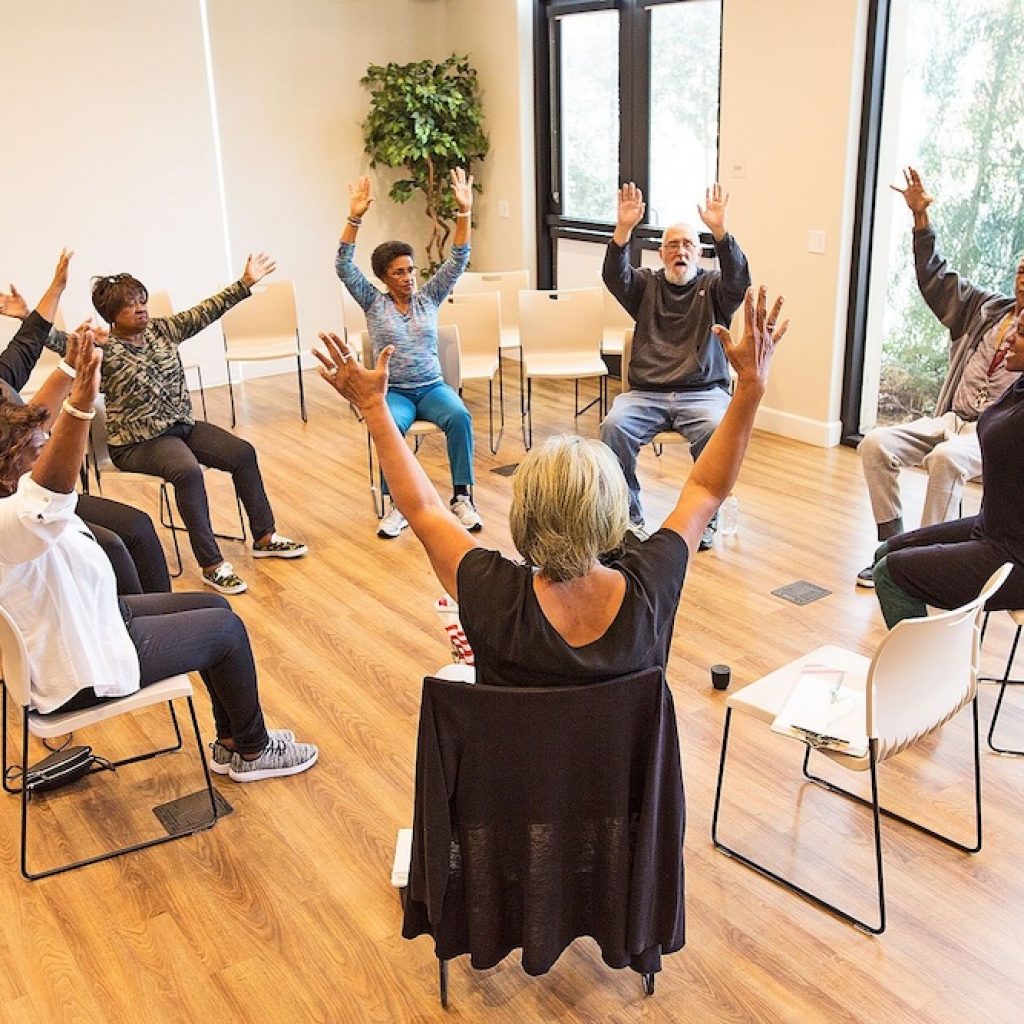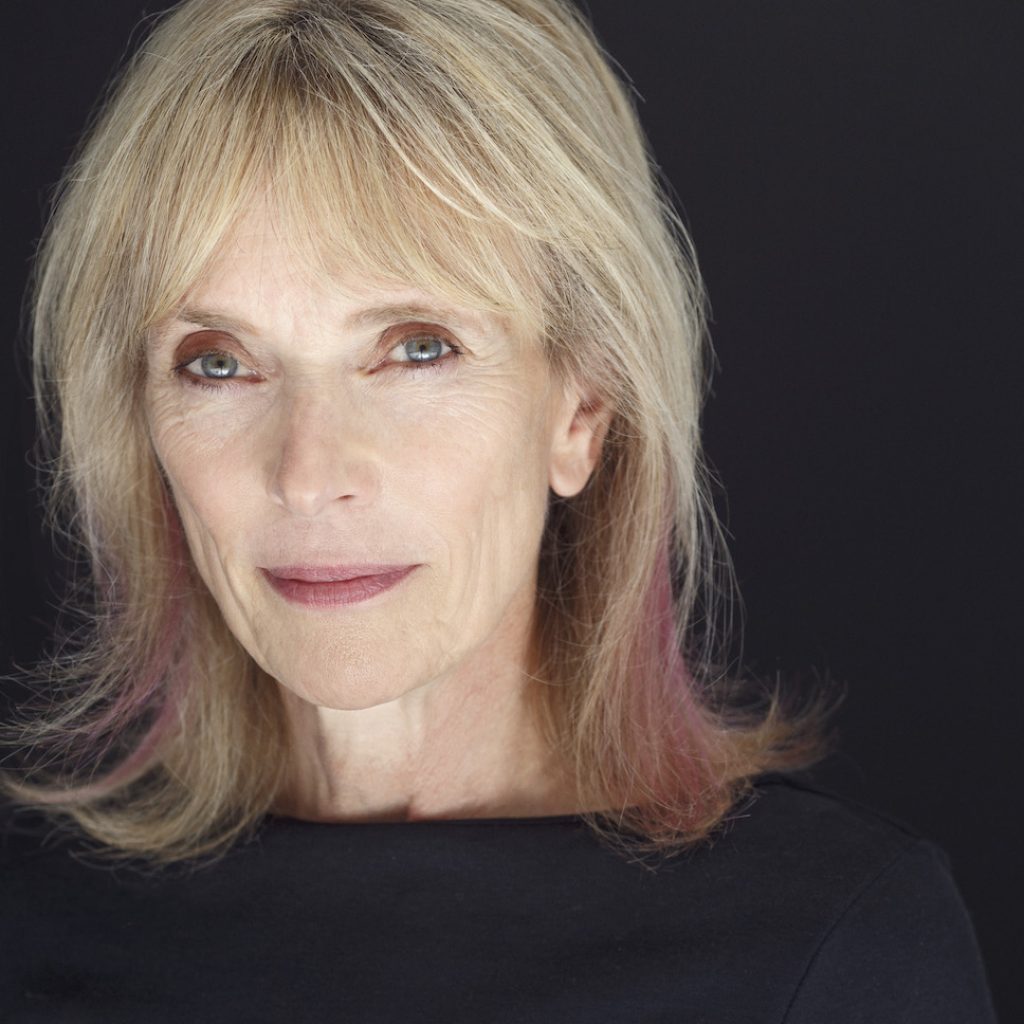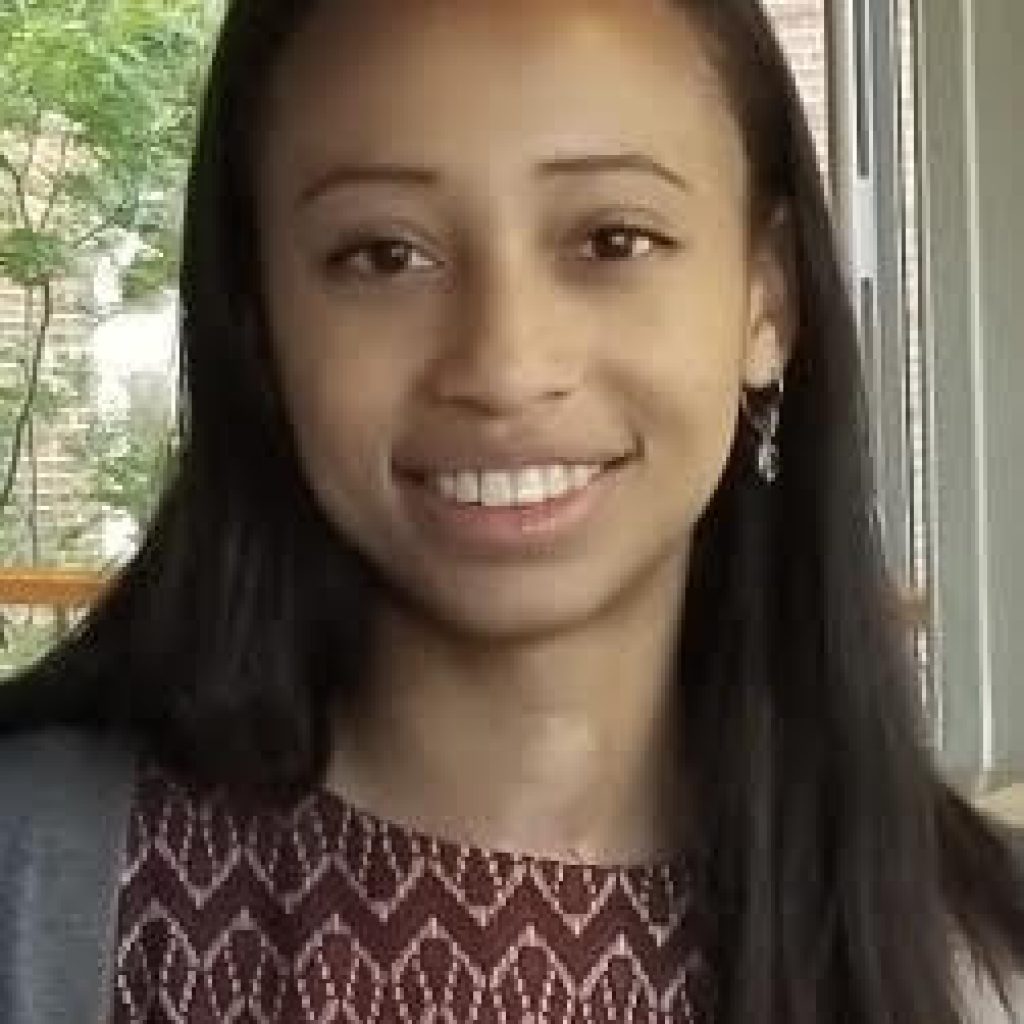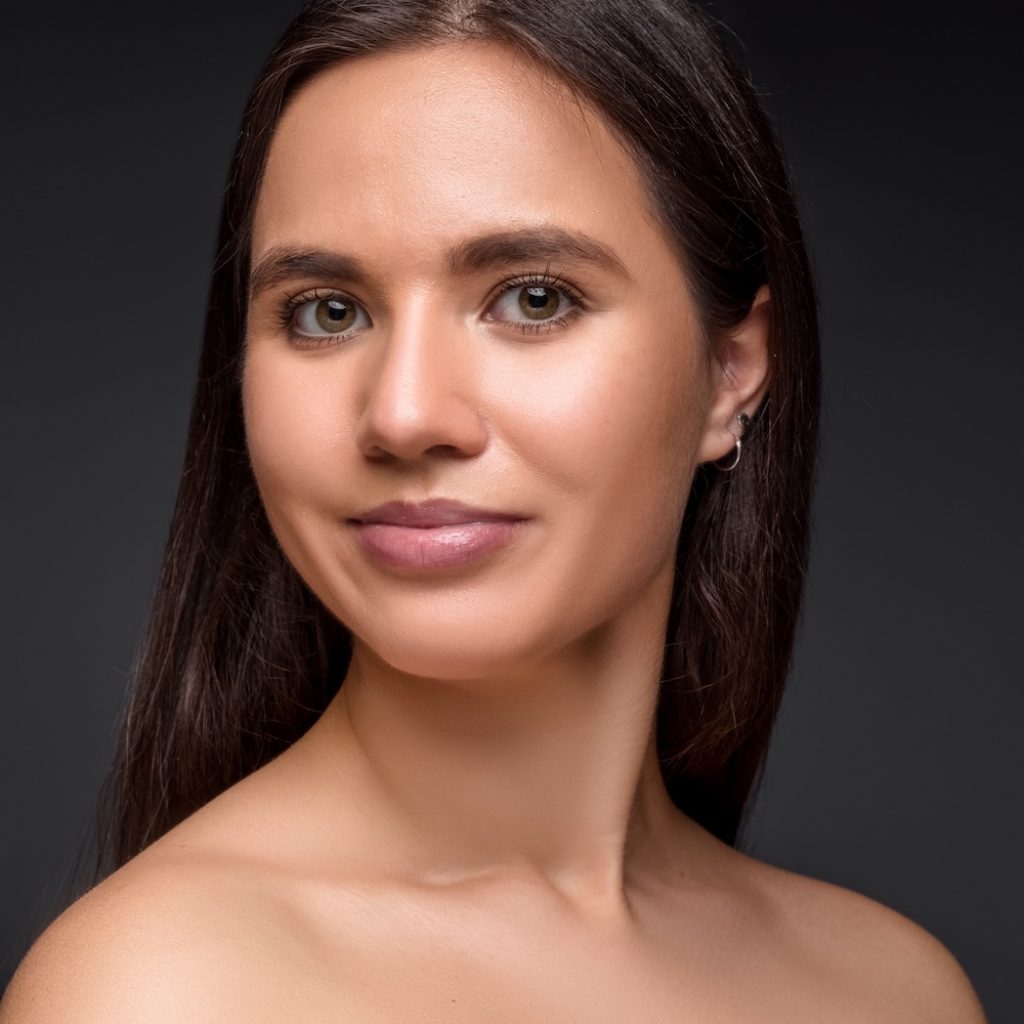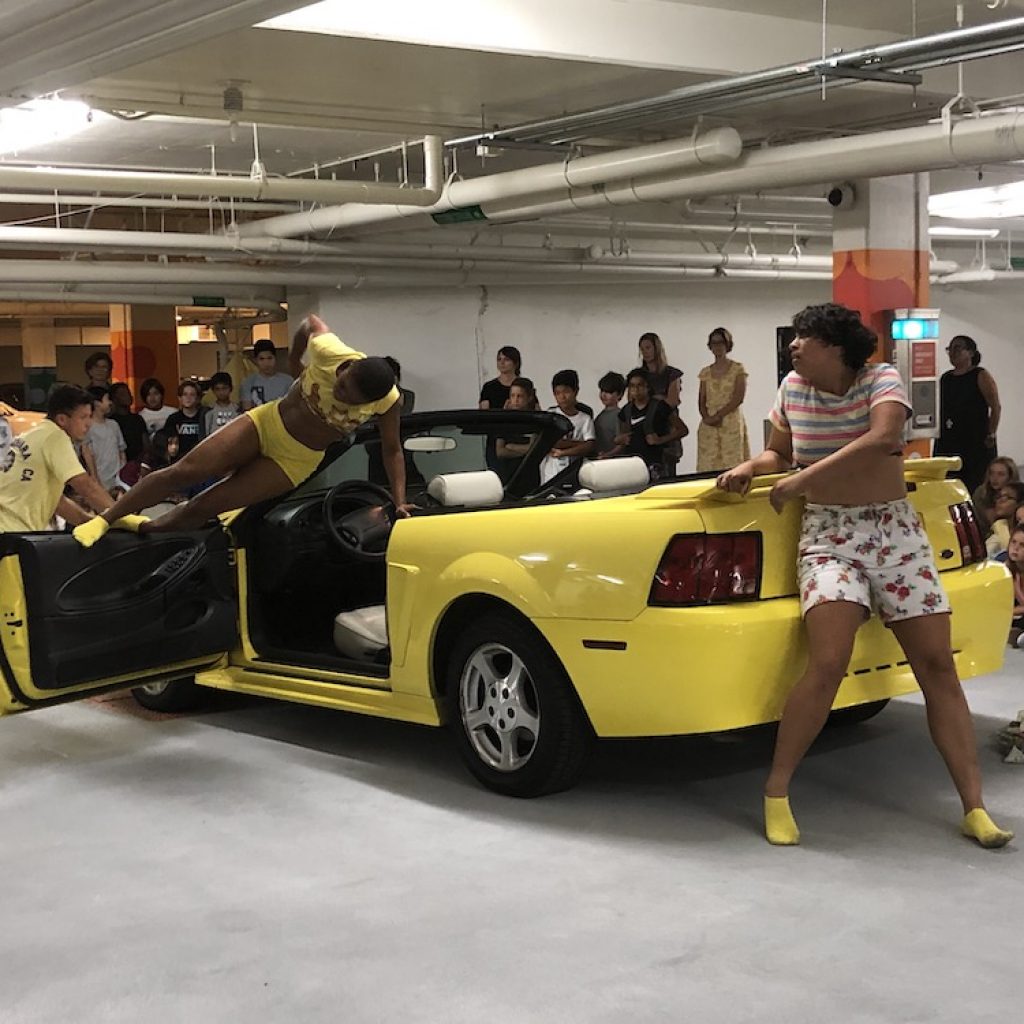Dance Informa had the opportunity to speak with Heidi Duckler, Founder and Artistic Director of Heidi Duckler Dance; as well as Rebecca Lee, Education and Programs Director; and Raven Richard, Director of Development and Communications. Read on to learn about their three-part mission and all that the organization is doing for the dance community in L.A. and beyond!
When, how and why did Heidi Duckler Dance get started?
Heidi Duckler
“We founded the company 37 years ago because there was no one else out there doing the things we wanted to do. I still don’t think there’s anyone quite like us. There was a need to have a company that only performs on site and in communities, not in studios. A company that doesn’t teach a technique-based methodology but that works with original composition and movement and independent creative thinking. That’s the basis of the vocabulary. We’re a thinking person’s company, and through our site-specific works, we give our audiences complete agency over where to sit or stand, what to look at, where to be in the space. All of our projects are very collaborative –– with the audience, with the community, and with our partners and students.”
Raven Richard
“Our educational programming officially launched in 2013, but before then and throughout the company’s history, education has been integrated into all of the programming.”
Rebecca Lee
“We work to promote the idea of autonomous decision-making in our educational programs as well. Our workshops are more than just teaching steps or choreography, and delve deeply into concepts and ideas.”
Can you say more about your three pillars: Democratic Dance, Arts Education and Spatial Justice? Has the organization’s mission shifted or evolved over time?
Lee
“All three of our pillars rely on the same foundation of accessibility. We strive to share with the communities we create in that dance is for them, and isn’t for a particular body type or socioeconomic class. From professional works to educational programs within public schools, all of our programming creates spaces for that message.”
Duckler
“A lot of educational programming brings the population to where the form is being taught, to a studio or an arts space. We don’t do that. We have our office, but we don’t have a studio. We go to where the people are, and that’s a way for us to provide access; we come to you, and together we create work using the resources that are available.”
Richard
“That’s really been a throughline throughout the whole history of the organization. Things organically began with Heidi choreographing in places like the laundromat. We go to where the population gathers, works and plays every day.”
What are the organization’s primary dance education goals?
Lee
“I think what’s so great about our curriculum is that it’s been curated to be applicable to so many age ranges and populations. A lot of the curriculum has to do with awareness. Classes will often start with students just becoming aware of themselves and the physical space and people around them. This is a practice that can be explored not only in the classroom, but taken outside into their everyday lives. So much of the work is based on original composition, freedom of choice and collaboration, all skills that can be exported so that students can work together with their peers more efficiently while speaking up for what they need. A teacher might put them into groups, have them choose something in the space that excites them architecturally, and create together inspired by that. The curriculum is designed to move into the individual’s life, and is not just singular to that hour-and-a-half class that we have with them.”
Richard
“One teaching artist a couple of weeks ago had students pair off; one would move and then stop, and the other had to base their movements around them, finding creative ways to fill in their negative space. You could see the students struggle at first, but awareness and confidence was built over the course of the class. I watched the evolution of how each student thought about their partner.”
Duckler
“Increased consciousness and awareness are definitely things we hope to inspire. Sometimes the words get worn out a little bit, but confidence and team building, too.”
What are some of the educational programs that you offer, and how do you determine what communities you offer them to?
Duckler
“Sometimes they find us, and sometimes we find them. Sometimes, one thing leads to the next.”
Lee
“A lot of our engagement comes through the word of mouth trail. When you talk about what types of communities you want to go into, a lot has to do with listening for a need. Where is arts education really lacking? Of course, we’re going to be responsive to the people asking for services, but it’s essential to always seek to provide something which is needed. There also tends to be a kind of need everywhere as far as arts education in the U.S. goes. Within L.A., we look at the variation of quality or even existence of arts education opportunities when seeking out the communities who would benefit most from our programming.”
Duckler
“We’re located in the Promise Zone, as allocated by President Obama. We tend to look here first because there is so much need in South L.A. For example, we’ve been at Martin Luther King Jr. Community Hospital for a five-year residency and want to continue fostering long-term commitments to places like that. There are other pockets of the Valley and other places that need us, too, but as a small organization, we can’t spread ourselves too thin.”
Can you speak about the organization’s approach to creative processes?
Duckler
“Everything created on site, not created in a studio and then moved. Improvisation is important because that’s how you make discoveries; we all have intuitions to be expanded upon and deepend, and that happens through improvisation. But then you want structure to arise out of the improvisation. How tight that structure becomes depends on the intention, the amount of time, the skillset of the group or individual, and many other factors. Structure is very important because site-specific work in particular can be very dangerous without it. We are big believers in intricate, tightly knit, well-formed works.”
Lee
“All of our residency programs end in a final performance or culminating experience, and the students have a lot of freedom throughout the creative process leading up to that. Our students also perform at the company’s professional shows. At our gala in October, two student groups performed collaboratively created works.”
What do you think dance has to offer for the general public that other artistic forms do not?
All in unison (literally)
“EVERYTHING!”
Duckler
“Dance is a form of communication that spills over boundaries and cultures. As much as we focus on local communities, we just returned from Chile. We go to places across the globe where communication sometimes takes the form of dance. That’s how cultures can really talk to each other sometimes. It’s just so important.”
Lee
“What dance has to offer to young people, but really anyone, is that it can build confidence in a way that is so different from the external sort of validation that’s readily available in contemporary society. It also can provide an outlet for the hard things that we’re all dealing with. The way that younger people are coping with the craziness in this world often flies under the radar. Dance can provide solutions to internal struggles, and enable students to listen to one another and to themselves. Those skills are so necessary to survive, and being able to provide them through an art form that can also be seen as ‘simply fun’ is such a gift.”
Richard
“Dance is essential especially after COVID. Dance can excite students, make them feel more optimistic about the possibilities and their future, and even motivate them to want to go to school. Dance exposes a new area of expression and possibility. It tells students, ‘You can be an artist.’”
Duckler
“There’s also the fact that it’s your body. You don’t need anything else. You have agency over it, and it’s quite a powerful tool.”
What’s next for Heidi Duckler Dance?
Duckler
“We have a yellow Mustang convertible –– our dancemobile –– and we want it to travel far and wide, giving as many students as possible the opportunity to create in it.”
Lee
“A lot of what we’re doing is with the public school district, which tends to have the least access to arts education. We’re also expanding to new partnerships while deepening relationships with certain partners and communities.”
Richard
“From foster youth to people who were previously incarcerated, we work with a diverse population, and we’re finding ways to stay connected to those specific communities and areas of need while building up our capacities more generally.”
Duckler
“We’re also exploring ways of integrating education and artistic programming so that they feed off of each other; artists have so much to say and give, and it’s important that the programming can be woven together.”
For more information on Heidi Duckler Dance, visit heididuckler.org.
By Charly Santagado of Dance Informa.


